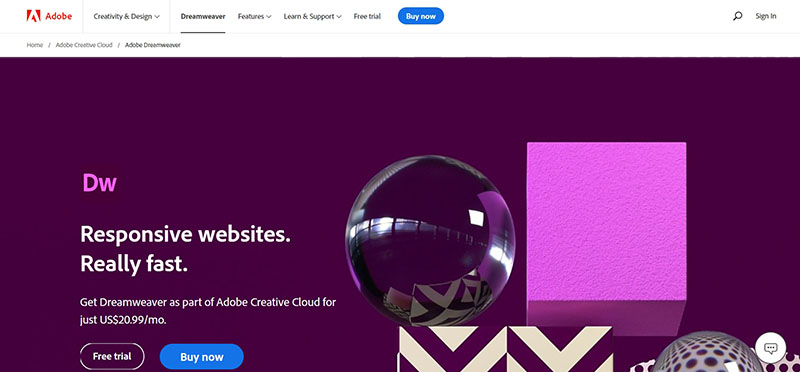Web Development
Overview of Web Development and Design Tools for 2024

As a web developer and designer, staying up-to-date with the latest tools and technologies is crucial. In 2024, the web development and design landscape is evolving rapidly, with a range of exciting tools available to enhance your workflow and create stunning websites. From Adobe Dreamweaver to Sketch, Visual Studio Code, and Figma, each tool brings its unique features and capabilities to the table.
With Adobe Dreamweaver, you can easily build and manage websites with its user-friendly interface. Sketch offers powerful design capabilities and seamless integration options. Visual Studio Code allows for customization and comes with a wide range of extensions and plugins. Lastly, Figma provides collaborative prototyping and design systems. By harnessing the power of these web development and design tools, you can elevate your projects to new heights in 2024.
When it comes to web development and design in 2024, some standout tools can greatly enhance your workflow and help you create stunning websites. One of my top recommendations is Adobe Dreamweaver, which offers a user-friendly interface and allows you to easily build and manage websites. Sketch is another popular choice, known for its powerful design capabilities and seamless integration options. Visual Studio Code is a favorite among developers, with its customizable features and extensive range of extensions and plugins. And lastly, Figma is a go-to tool for collaborative prototyping and design systems. These web tools in 2024 and can take your projects to the next level.
What to Expect
In 2024, we can expect web development and design tools to continue evolving and improving to meet the demands of the industry. With the rapid advancements in technology, we can anticipate tools that offer more intuitive interfaces, enhanced collaboration capabilities, and seamless integration options. Artificial intelligence and machine learning may also play a role in automating certain aspects of web development and design processes.
Additionally, we can look forward to updates and enhancements from popular tools like Adobe Dreamweaver, Sketch, Visual Studio Code, and Figma, as they strive to stay ahead of the curve and provide users with the best possible experience. As the web development and design landscape continues to evolve, we can expect these tools to adapt and innovate to meet the needs of professionals in the field.

Key Trends in Web Development and Design Tools for 2024
In my opinion, some key trends we can expect to see in web development and design tools for 2024 include more emphasis on intuitive interfaces and user-friendly features. As technology continues to advance, tools will become more accessible to a wider range of users, including those with limited technical knowledge. Collaboration capabilities will also be a major focus, with tools offering seamless integration options to enable teams to work together more efficiently.
Additionally, artificial intelligence and machine learning may play a larger role in automating certain aspects of the development and design process, making tasks more efficient and streamlined. Overall, we can expect web development and design tools to continue evolving to meet the changing needs of professionals in the industry.

Adobe Dreamweaver
Adobe Dreamweaver is a popular web development and design tool that offers a wide range of features and capabilities. With its intuitive interface and user-friendly features, Dreamweaver makes it easy for both beginner and advanced users to create and edit websites. It provides a visual editing mode for those who prefer a visual interface, as well as a code editor for those who prefer to work directly with HTML and CSS code. Dreamweaver also offers responsive design tools, allowing users to easily create websites that adapt to different screen sizes and devices. With regular updates and enhancements, Adobe Dreamweaver remains a top choice for web developers and designers in 2024.
Adobe Dreamweaver Features and Use Cases
As a web developer and designer, I’ve found Adobe Dreamweaver to be an essential tool in my arsenal. One of the key features of Dreamweaver is its intuitive interface, which makes it easy for even beginners like me to create and edit websites. I particularly appreciate the visual editing mode, which allows me to see the changes I make in real time.
This feature has been incredibly helpful in fine-tuning the look and feel of my websites. Additionally, Dreamweaver offers a code editor for those who prefer to work directly with HTML and CSS code, giving me the flexibility to choose the workflow that suits me best. Whether you’re a beginner or an experienced professional, Adobe Dreamweaver has the features and functionality to meet your web development and design needs.
Adobe Dreamweaver Updates and Enhancements

Over the years, Adobe Dreamweaver has consistently evolved and adapted to the ever-changing landscape of web development and design. With each new update, the software brings exciting enhancements that help streamline workflows and improve overall productivity. One notable update is the integration of Git support, which allows for seamless collaboration and version control.
Additionally, Dreamweaver now offers improved CSS and JavaScript code hinting, making it easier to write clean and error-free code. The latest version also includes an enhanced Live View mode, providing a more realistic preview of websites across different devices. With these updates and enhancements, Adobe Dreamweaver continues to be a top choice for web developers and designers in 2024.
Sketch
As a web designer, one of my go-to tools for creating stunning visuals is Sketch. With its intuitive interface and powerful design capabilities, Sketch has revolutionized the way I approach web design. It offers a wide range of features that allow me to create pixel-perfect designs, from responsive layouts to intricate icons and illustrations.
What sets Sketch apart is its compatibility and integration options. It seamlessly integrates with other design tools and workflows, making collaboration with developers and stakeholders a breeze. Whether I need to share design files, gather feedback, or export assets, Sketch has got it covered. The vibrant design community also contributes to a vast library of plugins and templates, expanding the possibilities even further. Sketch truly empowers me to bring my design visions to life.
Sketch Design Capabilities and Features
When it comes to design capabilities, Sketch truly shines. With its user-friendly interface and powerful tools, Sketch enables me to create stunning visuals with ease. Whether I need to design responsive layouts, intricate icons, or detailed illustrations, Sketch has got me covered. It offers a wide range of features that allow me to create pixel-perfect designs, ensuring that every element is precisely placed. Moreover, Sketch’s vector-based editing capabilities allow for unlimited scalability without compromising on quality.
I can easily create and modify shapes, add gradients and shadows, and experiment with different typography options. Sketch’s vast library of symbols and styles also helps me maintain consistency across my designs, saving both time and effort. And with the ability to quickly preview my designs on different devices and screen sizes, I can ensure that they look flawless across the board. Sketch truly empowers me to bring my design visions to life.
Sketch Compatibility and Integration Options

Sketch offers a variety of compatibility and integration options that make it a versatile tool for web development and design. First and foremost, Sketch is compatible with both Mac and Windows operating systems, ensuring that designers can use it regardless of their preferred platform. Additionally, Sketch integrates seamlessly with other design tools and software, allowing for a smooth workflow.
It supports importing and exporting designs in various file formats, such as PNG, JPEG, SVG, and PDF, making it easy to collaborate with team members or share designs with clients. Moreover, Sketch offers integration with popular collaboration platforms like Zeplin and InVision, enabling designers to easily share their work and gather feedback in real time. These compatibility and integration options make Sketch a powerful and flexible tool in the world of web development and design.
Visual Studio Code
Visual Studio Code is a powerful, user-friendly web development and design tool. As a developer, I can’t imagine working without it. It offers a wide range of features and customization options, allowing me to tailor my coding environment to my preferences. Visual Studio Code has everything I need to streamline my workflow and enhance my productivity, Whether through its built-in terminal, powerful debugging capabilities, or extensive library of extensions and plugins.
I can easily install extensions for popular languages and frameworks, making coding a breeze. Plus, with its live collaboration feature, I can easily collaborate with team members in real time. Visual Studio Code truly takes web development and design to the next level.
Visual Studio Code Features and Customization

Visual Studio Code offers a plethora of features and customization options that make it an indispensable tool for web development and design. With its intuitive and user-friendly interface, I can easily navigate through my code and make edits with ease. The built-in terminal allows me to run commands and scripts without switching between different applications. The powerful debugging capabilities help me identify and fix issues in my code efficiently.
Additionally, Visual Studio Code’s extensive library of extensions and plugins allows me to enhance my coding experience by adding support for different languages and frameworks. From customizable themes to keyboard shortcuts, I can personalize my coding environment to suit my preferences and optimize my workflow. With Visual Studio Code, I have all the features and customization options I need to create amazing websites and applications.
Visual Studio Code Extensions and Plugins
Visual Studio Code offers a vast library of extensions and plugins that take its functionality to the next level. These extensions and plugins expand the capabilities of Visual Studio Code, allowing developers and designers to work more efficiently and effectively. From language support for different programming languages to theme customization, there is an extension or plugin for almost any need.
Some popular extensions include Live Server, which provides a live server for web development, and Prettier, a code formatter that improves code readability. Other extensions enhance productivity with features like Git integration, IntelliSense, and debugging support. With the ability to add and customize extensions, Visual Studio Code becomes a powerful tool tailored to individual preferences and requirements.
Table: Visual Studio Code Extensions and Plugins| Extension/Plugin| Functionality|
|———————-|—————————————————–|
| Live Server| Provides a live server for web development|
| Prettier| Code formatted for improved readability|
| Git Integration| Seamless integration with Git for version control|
| IntelliSense| Intelligent code suggestions and completions|
| Debugger| Robust debugging support for finding and fixing issues|
By adding these extensions and plugins to Visual Studio Code, developers and designers can supercharge their workflow, increase productivity, and create high-quality code and designs. It’s worth exploring the extensive library of Visual Studio Code extensions and plugins to customize the IDE to your specific needs and enhance your web development and design journey.
FigmaSource: www.dotyeti.com
Figma is a fantastic web development and design tool for 2024! It offers a collaborative working environment, perfect for teams working on projects together. With Figma, you can create stunning designs and prototypes in a breeze. Its intuitive interface and powerful features make it a go-to tool for many designers. One of the highlights of Figma is its design systems and components, which allow you to easily maintain consistency and efficiency across your designs.
Whether you’re a beginner or an experienced designer, Figma has something to offer. Give it a try and unlock a world of creativity and collaboration! And if you want to learn more about Figma and its capabilities, check out the resources and further reading section for additional insights.
Figma Collaborative Tools and Prototyping

Figma has revolutionized the way designers collaborate and create prototypes. Its collaborative tools make it easy for teams to work together in real-time, whether they’re in the same room or across the globe. With Figma, you can invite team members to join your project, allowing them to view and edit designs simultaneously.
This eliminates the need for constant back-and-forth communication and speeds up the design process. Additionally, Figma’s prototyping capabilities are top-notch. You can create interactive prototypes with just a few clicks, allowing you to test and validate your design ideas before development. Figma truly empowers teams to work together seamlessly and create exceptional web designs. So why wait? Start collaborating and prototyping with Figma today!
Figma Design Systems and Components
Design systems and components are essential for creating consistent and efficient designs. Figma excels in helping designers build and maintain design systems seamlessly. With Figma, you can create reusable components that can be easily accessed and modified across multiple projects. This saves valuable time and ensures design consistency throughout your work.
Moreover, Figma allows you to establish design rules and guidelines, making it easier for designers to follow the defined visual standards. You can also document and share your design system with your team, ensuring everyone is on the same page. By utilizing Figma’s design systems and components, you can enhance collaboration, maintain brand consistency, and streamline your design workflow.
Conclusion

In conclusion, the web development and design tools for 2024 offer a wide range of features and capabilities to help streamline and enhance the web design process. Adobe Dreamweaver provides a comprehensive platform for building and managing websites, while Sketch offers powerful design capabilities and seamless integration.
Visual Studio Code stands out for its customization options and extensive library of extensions. And Figma excels in collaboration and design system creation. As technology evolves, we can expect these tools to keep pace with the latest trends and advancements, providing designers and developers with even more efficient and user-friendly solutions. Keep exploring these top web tools reviews in 2024 to stay at the forefront of the web development and design industry.
Best Web Development and Design Tool Recommendations for 2024
Now that we have explored the top web development and design tools for 2024, it’s time to make some recommendations. Based on their features, capabilities, and industry popularity, here are my top picks:
- Adobe Dreamweaver: With its comprehensive platform and powerful features, Dreamweaver remains a top choice for web development. Its intuitive interface and extensive library of templates make it easy to create and manage websites.
- Sketch: If you’re focused on design, Sketch is a fantastic tool. Its robust design capabilities and seamless integration with other design tools make it a go-to for designers who want to create stunning visuals.
- Visual Studio Code: For developers looking for customization options and an extensive library of extensions, Visual Studio Code is the way to go. Its versatility and user-friendly interface make it a popular choice in the developer community.
- Figma: When it comes to collaboration and design system creation, Figma shines. Its real-time collaboration features and easy sharing options make it perfect for teams working on web design projects.
These tools have proven their worth in the industry and are highly recommended for web development and design in 2024. With their help, you can streamline your workflow and create exceptional websites and designs. So, go ahead and give them a try!
Resources and Further Reading
As you dive deeper into the world of web development and design in 2024, it’s always good to have additional resources and references at your fingertips. Here are some recommended resources and further reading materials that can enhance your knowledge and skills:

- Online Tutorials and Courses: Platforms like Udemy, Coursera, and Codecademy offer a wide range of web development and design courses taught by industry experts. These courses can provide you with in-depth knowledge and practical skills.
- Blogs and Websites: Stay up to date with the latest trends and developments in the web development and design industry by following blogs and websites such as Smashing Magazine, A List Apart, and CSS-Tricks. These platforms publish informative articles, tutorials, and case studies that can inspire and educate you.
- Online Communities and Forums: Joining online communities and forums such as Stack Overflow, GitHub, and Designer News can connect you with a vibrant community of developers and designers. Engage in discussions, ask questions, and contribute to the community to expand your knowledge and network.
- Books: There are several must-read books for web developers and designers. Some popular titles include “HTML and CSS: Design and Build Websites” by Jon Duckett, “Don’t Make Me Think” by Steve Krug, and “Designing Interfaces” by Jenifer Tidwell. These books provide valuable insights into best practices and industry standards.
Remember, continuous learning and exploration are key to staying relevant and thriving in the ever-evolving web development and design field. Happy learning!

